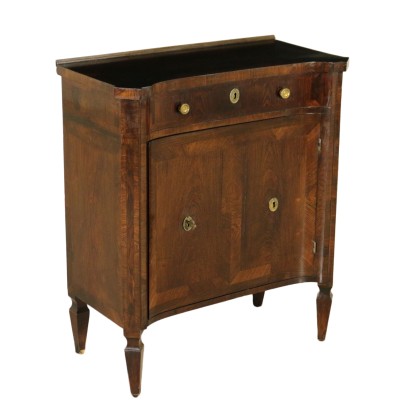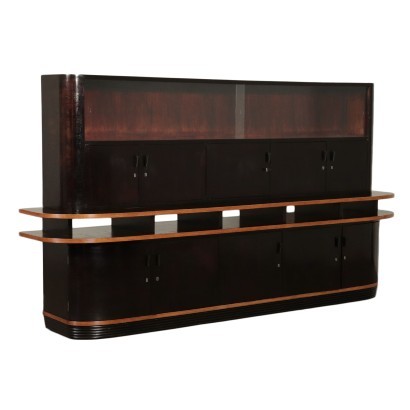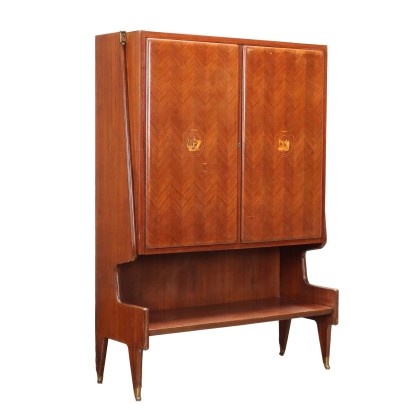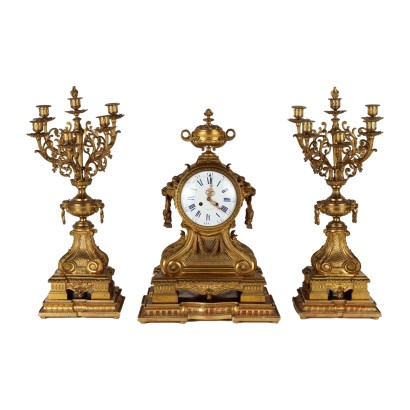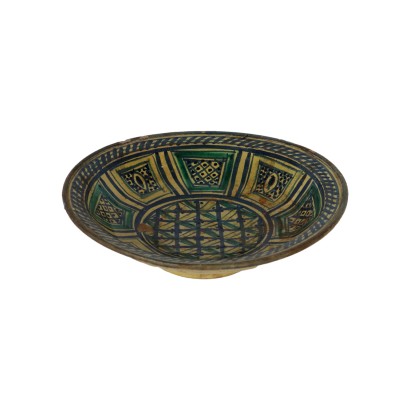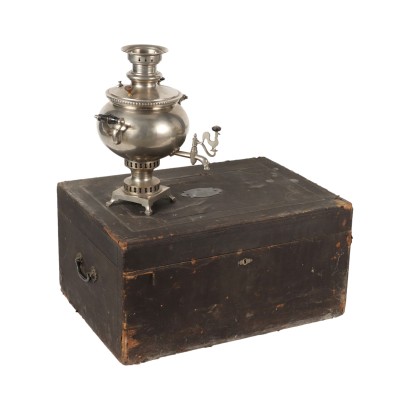Belief in the face of the convex
Features
Style: Directoire (1790-1804)
Age: 19th Century / 1801 - 1900 , 18th Century / 1701 - 1800
Year: Fine '700 - Inizi '800
Origin: Firenze, Toscana, Italy
Main essence: Rosewood
Description
Small cupboard in front and convex, has a tray under the floor, and a door, the uprights at 45 degrees, feet, trunk, pyramidal; the entire surface is veneered in rosewood from Rio with threads opposed to the fishbone and reserves, the central larger. On the door there is a double score, to simulate two doors. The interior is in wood Gattice and the move has been made by means of lievitature hidden by the veneer. Locks in the iron-steel, as is customary in Florence, knobs and escutcheons in bronze chiselled and gilded.
Product Condition:
Product in good condition, has small signs of wear and tear.
Dimensions (cm):
Height: 88
Width: 77
Depth: 39
Certificate issued by: Enrico Sala
Additional Information
Style: Directoire (1790-1804)
In this short period of time we witness, in the furniture, an accentuation of the archaeological rigor and at the same time an accentuated linear severity is formulated that in fact preludes and anticipates forms and ornaments that will then be typical of the Empire style.The Direttorio period furniture abandons the delicate pastel colors that characterize the Louis XVI production in favor of the dark magnificence of mahogany, which in its vast range of essences will be by far the most appreciated wood in this period.
Added to this is a general abandonment of floral inlay trends to which simple ebony or amaranth stained wood threads are preferred, the most fashionable is the inclusion of slight linear brass profiles.
The novelties are grafted on a trend that usually finds types already widespread in the neoclassical era, and in some cases there is no lack of significant innovations: the chairs, often painted in light colors and archaeological motifs, are distinguished by the typical backrest upholstered or finished with openwork which is rolled "en crosse" and "S".
The rear legs are all the rage when curved like a saber and the wraparound backrest type, known as a gondola, is widespread.
For studies and libraries, models of chairs characterized by a high concave backrest, called "en hémicycle", with a usually solid structure and with a seat covered in leather, spread.
The use of the secrétaires is widespread and the type of toilet is completely new, now similar to a console on which rests a tilting mirror within hinged plates.
Certainly the most imaginative novelty of this period is the graceful psyche, consisting of a large oval-shaped or rectangular mirror, mounted within high wooden supports and generally supported by saber-shaped legs.
This is the era where the oval or round dining table is very popular, while the desk continues to maintain the shape of the à bureau plats models already known in the previous era.
In this period there are no particular technical-constructive innovations, the technologies remain those already in use since the beginning of the mid-eighteenth century.
Find out more about the Directory with our insights:
The game table, this unknown



